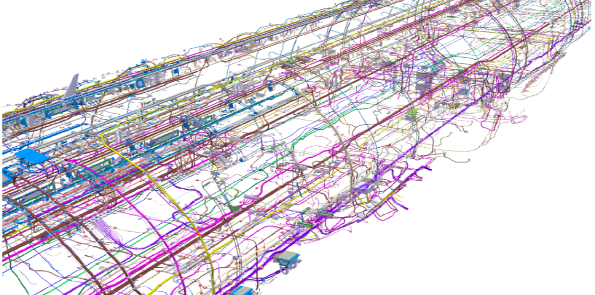How to transfer images via the electrical connector?
With the continuous expansion of the scope of application applications, they can be divided according to its two basic functions: signal transmission and electrical transmission of two categories. In the field of electronic applications, these two types of electrical connector is a significant feature of its terminal with a certain current, in other applications, the voltage provided by the terminal will also be as a very important consideration, although the same terminal design can be As a signal and power transmission of two functions, but in a variety of similar contact with the application point of view, many electrical transmission connector in the terminal design only the need for power transmission as the sole purpose.
The image signal is transmitted by the electrical connector:
Signal transmission can be divided into two categories: simulation signal transmission and digital signal transmission. This classification is based on a number of common features, regardless of the simulation or digital signal connector, the required function should be able to protect the transmission of the voltage pulse signal integrity, the integrity of the pulse signal should include the waveform and its amplitude The The data signal is different from the simulation signal at the pulse frequency. The pulse transmission speed determines the maximum frequency of the protected pulse. The transmission speed of the data pulse is much faster than that of some typical simulation signals. Some pulses are in the electrical connector The speed of transmission is close to the range of one hundred billionth of a second, and in today's microelectronic technology, the connector is usually viewed as a conductor because the wavelength associated with the fast growing frequency can be compared to that of the connector size.
When the electrical connector or an interconnected system such as a cable assembly is used in high-speed data signal transmission, the corresponding description of the performance of the electrical connector also changed. It is particularly important to replace the characteristic impedance of the resistor and the crosstalk in the interconnected system. Control the electrical connector characteristic impedance becomes a big sense of the trend, in the cable is to control the crosstalk. The characteristic impedance has such an important position in the connector because the geometry of the resistor is difficult to achieve uniformity, and the size of the electrical connector is small and the possibility of crosstalk must be minimized.
In the cable, the control of the geometry is easier to implement, and its characteristic impedance is also easy to control, but the length of the cable will likely cause potential crosstalk. The control of the characteristic impedance in the connector is carried out for this reason. In a typical open terminal area, the connector impedance (and crosstalk) is achieved through a reasonable distribution of the control terminals. In this type of signal, the ground ratio is a reflection of this distribution, the ground ratio is reduced. Of course, this result will reduce the number of terminals available for electrical signal transmission. The reason why the signal terminal is related to the location is a very important consideration. In order to avoid the reduction of the ground terminal, the electrical connector system with the overall ground plane has been developed. The geometry of the microbes and bars has been described in the previous article. The overall ground plane allows for the use of signal terminals, and can increase the density of all signal signals transmitted by the connector connector.
The above is a brief introduction to how the electrical connector affects the transmission. To learn more about the electrical connector, please follow the kingsignal website.







